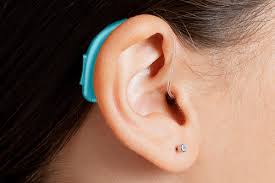In recent years, the landscape of hearing aids has shifted dramatically, with technological developments driving considerable improvements in functionality and use. One of the most noticeable advancements is the incorporation of wireless networking capabilities. In this article, we’ll look at how hearing aids, such as those made by Phonak, are changing with technology to provide users with increased connectivity and a more seamless auditory experience.
1. The Rise of Wireless Connectivity
Traditional hearing aids were primarily concerned with boosting sounds to help those with hearing loss. However, the addition of wireless connectivity has increased the possibilities of current hearing aids, transforming them into sophisticated communication devices. Wireless connectivity allows hearing aid users to connect effortlessly to a variety of audio sources, improving their entire auditory experience.
2. Bluetooth Technology for Hearing Aids
Bluetooth technology has revolutionised hearing aids. Many modern hearing aids, including those from Phonak, include Bluetooth features, allowing users to connect wirelessly to smartphones, tablets, televisions, and other compatible devices. This direct connectivity improves phone call clarity, allows for audio streaming, and opens up new communication options.
3. Streaming Audio to Hearing Aids
One significant advantage of wireless communication in hearing aids is the ability to stream audio directly to the devices. Phonak hearing aids, for example, allow users to stream phone calls, music, podcasts, and other audio information right into their hearing aids. This function not only improves sound quality but also eliminates the need for additional devices, resulting in a more streamlined and user-friendly experience.
4. Improved Accessibility via Remote Control Apps
Wireless connectivity extends beyond audio streaming to include remote control features via specific smartphone apps. Users can alter volume levels, change hearing aid programmes, and fine-tune settings using their cell phones in a discreet and convenient manner. Phonak’s remote control app shows how wireless technology improves accessibility by allowing users to customise their hearing experience with only a few clicks on their mobile device.
5. Connectivity to Multiple Devices
Modern lifestyles include daily engagement with a variety of digital devices. Wireless communication in hearing aids addresses this demand by enabling smooth transitions between multiple audio sources. Users can move from a phone call to viewing TV or listening to music without having to make manual modifications, resulting in a more seamless and integrated experience.
6. Connectivity for Noisy Environments
Wireless communication in hearing aids, particularly those designed by Phonak, tackles the issues presented by noisy situations. Advanced noise reduction algorithms work in conjunction with wireless features to improve speech quality in busy environments. This allows users to actively participate in conversations without being distracted by background noise.
7. Telehealth & Remote Support
The advancement of hearing aids extends beyond audio connectivity. Telehealth features are becoming more popular, allowing customers to obtain remote support and adjustments from their hearing care providers. With Phonak’s remote assistance solutions, users may connect with their audiologists for fine-tuning and troubleshooting without having to schedule in-person appointments.
8. Customisable Alerts and Notifications
Wireless connectivity in hearing aids also allows for customisable alerts and notifications. Users can receive notifications about low battery levels, programme modifications, or routine maintenance. This feature improves the user experience by delivering timely information and ensuring that hearing aids work properly.
9. Integration of Smart Home Devices
As the Internet of Things (IoT) expands, hearing aids are connecting with smart home gadgets. Hearing aid apps allow users to connect to smart home systems and modify lighting, thermostats, and other linked devices. This level of integration not only improves ease but also fosters a more connected and accessible living environment.
10. Future Developments and Continuous Innovation
The advancement of hearing aids with wireless communication is progressing. Continuous technological advancement promises even more fascinating future developments. From artificial intelligence-driven features to improved interoperability with emerging technologies, the evolution of hearing aids, as seen by brands such as Phonak, is aimed at providing customers with increasingly complex and user-friendly solutions.
Conclusion
Wireless connectivity has undeniably transformed the hearing aid industry, providing users with previously inconceivable levels of integration and usefulness. The seamless connection to multiple devices, customisable settings, and the possibility of remote support are changing the way people experience and manage hearing loss. As manufacturers like Phonak lead the way in technical breakthroughs, the future promises great opportunities for people looking for more than simply hearing aids—complete auditory solutions that meet the needs of modern living.



